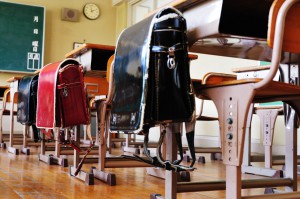For a long time now, we’ve been looking at how to adjust education to better reflect the changing world around us. But as the technology piles up and the innovation spreads, are we losing sight of what makes a learning environment truly effective, and what really drives better teaching and learning? While technology allows for more voice, choice and control, teacher-student relationships lie at the heart of how this technology is used, and how it impacts the teaching and learning experience for all involved. Built on support, trust, and mutual respect, the groundwork for good relationships generally begins in the home. Despite the unpredictable home-lives of many students, there are simple ways for educators to ensure the relationships with their students thrive and drive better learning, each revolving around that essential attitude of openness.
#1. Be Open and Visible
As Karl Lindgren-Streicher explains in his TED Talk “Teachers as Change Agents”, in order to really succeed in driving better learning outcomes, educators must be willing to be open and visible, sharing and collaborating as much as possible. He uses the example of a website to create a window into your classroom, showcasing the activities and lessons that you cover on a daily basis. Although a frightening prospect for many who live by the popular “what happens in my classroom stays in my classroom” mantra, this reluctance to share actually hinders the relationship-building process with students, faculty, and parents, making it harder to engage in effective collaboration.
#2. Collaborate
Collaboration plays a pivotal role in the relationship-building process for obvious reasons. By working together with students, parents, and faculty, educators can build upon their own ideas and form movements that directly impact their student-teacher relationships. Taking a more open and visible approach, students are encouraged to collaborate with their teacher, and not only their peers, in an attempt to make the learning process as rewarding as possible. Using social media in the classroom for example is a great way to challenge the traditional norms of teacher-student communication, offering each a more direct channel for open collaboration.
#3. Listen
Every good relationship demands give and take. A common mistake educators make is undervaluing student voice in an over-reaching effort to assume an air of authority. Although common practice for an educator to dominate the classroom, it’s now widely accepted that the person doing the most talking is the one doing the most learning. With this in mind, the listening skills of educators have become a significant test of their abilities to drive better learning as student voice becomes central to effective teaching. Simple tasks like open discussion, blogging, and asking for student feedback are making a huge difference to teacher-student relationships, promoting mutual respect, while elevating voice and choice.
#4. Offer More Control
In a role that demands your most advanced driving skills, allowing students to take the wheel may seem somewhat absurd. The reality however is that students progress further with more control over their own learning. Once the tools and support are put in place for students to indulge in independent learning within a self-paced environment, it’s time for you to move out of the way. As the drivers of their own learning, students are encouraged to ‘go deeper’ and explore all the possibilities that self-directed learning has to offer, as movements like genius hour have shown. By giving students this element of control and empowerment, the teacher-student relationship is brought to entirely new heights built firmly on trust.
By incorporating technology that centers around relationship-building, this process can be made a lot easier for educators. Adaptive learning platform, Fishtree, combines personalization, collaboration and analytics to help create the most open learning environment imaginable. With the help of social media to connect and collaborate, analytics to provide complete transparency into student learning, and personalized resources to offer students more control and support, building the student-teacher relationship from the ground up has never been as easy. With these tools in place, educators are empowered to make a lasting difference to the learning relationships both inside and outside the classroom, combining efforts to help every single student to succeed.
Like what you’ve read? Find out more about how to drive better learning relationships with the next generation learning platform.
About the author:
Lorna Keane specializes in language teaching and has taught in second and third-level institutions in several countries. She holds a B.A in languages and cultural studies and an M.A in French literature, theory and visual culture. Follow her on Twitter or connect on LinkedIn.
Image credits: Ethan Lofton / CC BY 2.0
